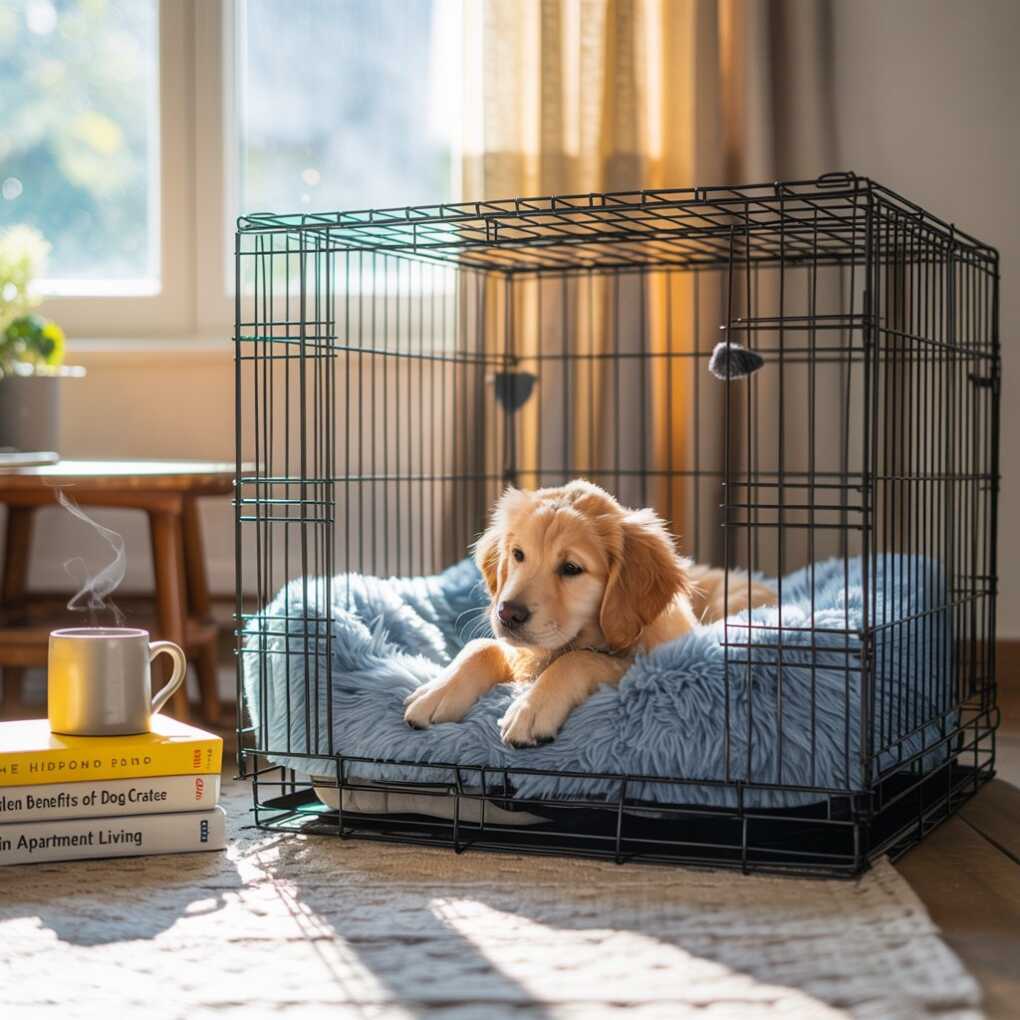Living with a dog in an apartment can be a beautiful experience — cozy, connected, and full of companionship. But tight quarters also present unique challenges. Noise complaints, limited space, and the absence of a private backyard can all make urban pet parenting feel overwhelming. That’s where one practical solution makes a surprising difference: a dog crate. While often associated with housebreaking puppies or travel, the benefits of crates in apartment living extend far beyond the basics.
Used thoughtfully, crates offer a balance of comfort, security, and structure for both dogs and their owners — especially in multi-unit buildings where control over the environment is limited. Let’s explore how crates help city-dwelling dogs thrive and why they’re an essential part of stress-free apartment life.

Managing Limited Space With Structure
Apartments typically don’t offer much room for separation or downtime. A crate can become a designated space for your dog that offers boundaries in a space otherwise shared with people, work-from-home setups, guests, and noise.
Rather than letting your dog roam freely in a small apartment — which can lead to boredom, anxiety, and destructive behavior — crates provide a physical and psychological boundary. This structure helps dogs feel grounded, especially when they’re overstimulated or unsure of their surroundings.
Key Advantage: A well-placed crate can serve as a “room within a room,” giving your dog personal space in a shared environment.
Noise Control and Neighbor Etiquette
In apartment settings, every bark can travel through walls, and every anxious paw scratch can echo across floorboards. For dogs with anxiety or reactive tendencies, crates serve as calming zones that reduce their exposure to triggers like hallway noise, elevator dings, or neighbors coming and going.
Tip: Choose a spot away from windows and main doors, ideally where your dog won’t be startled by sudden sounds or foot traffic.
Safer Alone Time While You’re Away
Apartment dwellers often leave their dogs home alone for work or errands. Without a crate, your dog might chew on furniture, tip over the trash, or become fixated on outside noises. Crates give dogs a secure place to rest, reducing the risk of injury and damage to your rental space.This is especially important if you’re renting in Montreal, where apartment living often comes with pet-related lease restrictions and close neighbors.
For puppies or newly adopted dogs, this kind of confinement isn’t punishment — it’s peace of mind. With a comfortable mat, safe toys, and positive crate associations, dogs learn to enjoy downtime. This reduces the likelihood of developing separation anxiety and prevents behavioral issues from forming.
Safety Note: Make sure your dog always has access to water and is never left in a crate longer than appropriate for their age and energy level.
Training Benefits That Stick
Crate training creates consistency in environments where routines may be unpredictable. For example, if your apartment complex hosts maintenance visits, deliveries, or social events, your dog may be exposed to frequent disruptions. Crates serve as a “safe zone” where your dog can retreat during stressful events — and with practice, they’ll learn to enter the crate voluntarily when they need a break.
Additionally, crate time between walks and play sessions helps dogs mentally reset. In smaller apartments where physical boundaries don’t exist, this kind of mental break becomes essential for behavioral balance.
A Solution for Multi-Pet or Roommate Households
Apartments often mean close quarters not just for dogs and humans, but for other pets or roommates. Crates allow you to create safe separation when needed — such as during feeding, quiet time, or when guests come over.
If your dog struggles with overstimulation or has conflicts with another pet in the household, a crate provides a neutral, low-arousal space where they can decompress.
Pro Tip: Use crate time as a preventative tool, not just a reactionary one. Routine rest breaks prevent tension from building up between pets.
Crates and Travel-Readiness
Apartment dwellers often travel with their dogs more frequently — whether to a park, a friend’s place, or a weekend trip. Crate-trained dogs are more adaptable to new environments because their crate serves as a portable comfort zone.
Dogs who are already comfortable in crates also tend to handle emergency situations better. For instance, if your apartment requires a sudden evacuation or maintenance visit, a crate-trained dog is easier to transport and manage safely.
Choosing the Right Crate for Apartment Life
Not all crates are created equal. In apartments, you want a crate that fits your space, is easy to clean, and stands up to regular use without becoming an eyesore.
High-quality models like Impact Dog Crates offer durable, low-profile designs that blend well into urban living. Their rugged build is ideal for dogs with separation anxiety or escape tendencies, and their design ensures security without sacrificing ventilation or comfort.
Look for a crate that:
- Fits your dog’s size without being oversized
- Has easy-access doors for quick entry and exit
- Is quiet (no rattling or shifting parts)
- Has a sleek, furniture-friendly look or compact design
